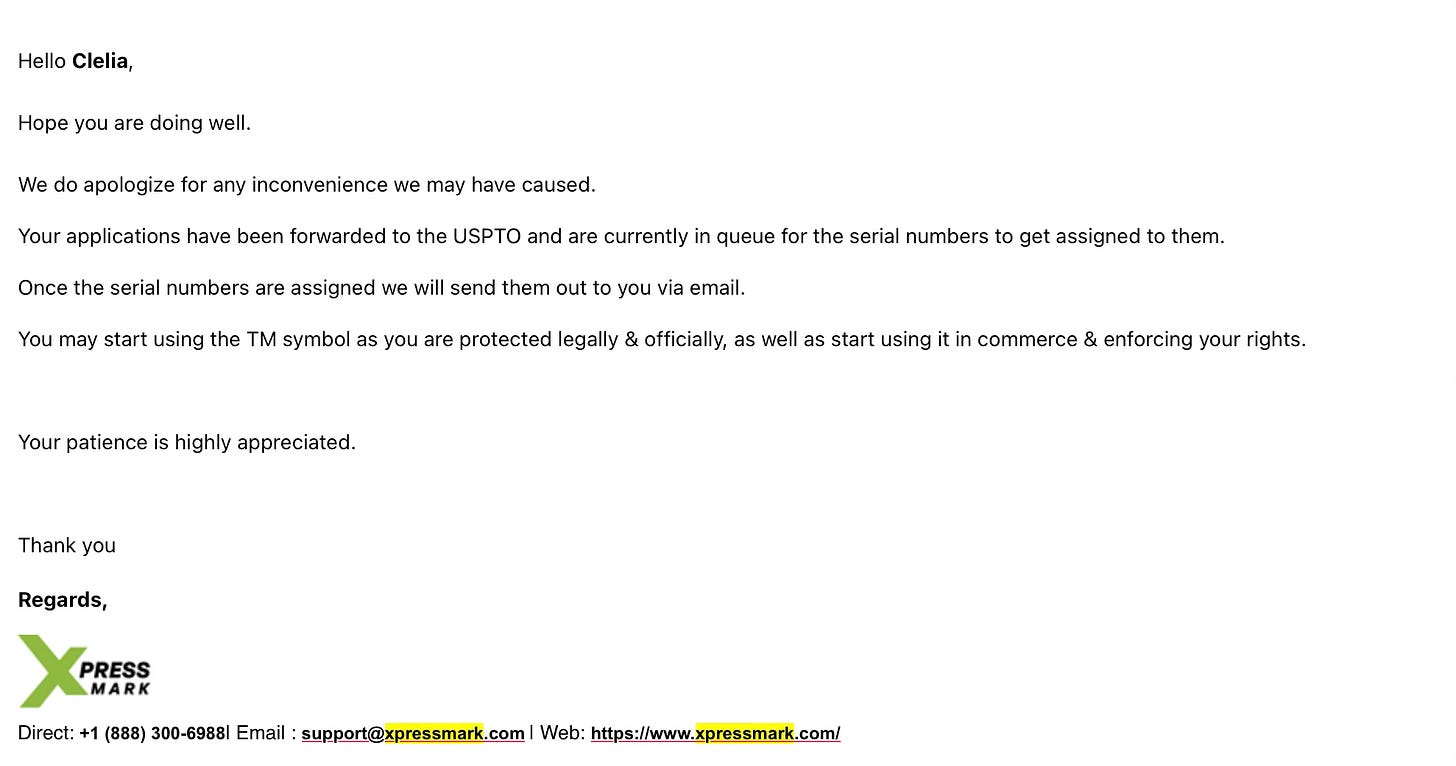Who Really Owns the Internet (Hint: It’s Not You)
Call (1-800-CALL-FBI) and you'll be redirected to KFC
It’s becoming more and more apparent that the departments supposedly meant to protect everyday people—you know, the legal channels, consumer hotlines, online fraud portals—aren’t exactly there for you. They’re optimized for the big fish. Try reporting an online scam or shady domain? Good luck. You’ll likely be redirected to a tangled mess of web forms, automated responses, or, worse, a tipline that sounds like the FBI but turns out to be... KFC. (1-800-CALL-FBI) Say it out loud. Craving biscuits yet?)
Anyway.
In 7th grade, I actually won a national essay contest about KFC and chickens. I wrote about my Nonna and her famous roast chicken, somehow connecting it to Kentucky Fried. It was cheesy, slightly emotional, and apparently convincing enough to get first place. Looking back, I laugh—but part of me’s still proud.
So imagine my frustration now, trying to trace who’s behind some shady websites impersonating real services—and hitting wall after wall. Which brings me to this: WHOIS, ICANN, the Wayback Machine, and yes—even the IETF.
WHOIS and ICANN Explained (Without the Bureaucratic Lingo)
What Is WHOIS?
WHOIS (pronounced "who is") is like a global phonebook for the internet. Every time someone registers a domain (like scam-site.biz or bigcorporatecoverup.com), they’re supposed to leave some identifying information behind: name, email, address, phone. You can query this info using WHOIS lookup tools (like whois.domaintools.com or whois.icann.org).
BUT... thanks to privacy protections (which are a double-edged sword), most data is hidden behind vague placeholder addresses or obscured by domain registrars using proxy services. The result? Good luck finding out who really runs the site that stole your money or impersonated a government agency.
Enter: ICANN
ICANN stands for the Internet Corporation for Assigned Names and Numbers. It’s a nonprofit that coordinates the global domain name system. Think of them as the overseers of WHO owns what dot-com.
They accredit the domain registrars (like GoDaddy, Namecheap, etc.) and set some baseline rules. If you have a legal dispute about a domain or need to report abuse, ICANN’s systems can sometimes point you in the right direction—but more often than not, they’ll send you back to the registrar or suggest you lawyer up.
When WHOIS Fails: Enter the Wayback Machine
If you’re trying to piece together what a website used to be—before it was wiped, rebranded, or made to look innocent—the Wayback Machine from the Internet Archive is your friend.
It lets you browse billions of archived web pages going back decades. Want to see what a suspicious site looked like last year before it suddenly turned into a “totally legit LLC”? The Wayback Machine might have a snapshot.
It doesn’t catch everything (some sites block it), and you won’t get ownership info—but you might find:
Proof of shady claims now deleted.
Old logos, contact info, or page titles.
Evidence of site evolution that contradicts its current “clean” image.
Basically, it’s one of the few tools that still works for people like us. Free. Open. No legal degree required. (Yet.)
And Then There's the IETF: Who Writes the Rules?
If ICANN manages the house, the Internet Engineering Task Force (IETF) designed the plumbing.
The IETF is an open, volunteer-driven body of engineers and researchers that drafts and maintains the technical standards that make the internet work—like how emails are sent (SMTP), how websites load (HTTP), and how domain names resolve (DNS). Their documents are called RFCs (Requests for Comments), and they’re the internet’s blueprints.
So no, they don’t care about who owns shadypharma.ru, but they do define how your browser even knows where to look. It’s quietly one of the most important institutions in tech—and you've probably never heard of it.
They don’t enforce rules. They write them, and if enough of the internet adopts them, those rules become reality.
TL;DR:
WHOIS = digital phonebook (except most people are in witness protection now).
ICANN = domain name traffic cop, but only if you’re driving a corporate tank.
Wayback Machine = the people’s archive—messy, brilliant, indispensable.
IETF = the unseen architects of how the web actually works.
So next time you stumble on a sketchy site and think “Hey, I’ll just report this!”—remember: unless you have legal firepower, it’s basically you vs. a labyrinth of proxies, registrars, and RFCs from 1998.
In short:
Your peon little query? Better fork up money to fix that scam.


Link to the Yelp Reviews: https://www.yelp.com/biz/xpressmark-porter
It fits the bigger pattern: everyday people trying to play by the rules while the system hides behind proxies, redirects, and paywalls. The internet is like real estate now—dominated by big players with the tools, lawyers, and leverage. Trademarks, WHOIS lookups, domain claims—it’s all paperwork stacked against you. And NFTs? They’re just shiny little luxury pods floating on land you still don’t own. And when you really think about it, it’s kind of absurd you even have to pay for a domain just to exist online.
Wait—What’s an “IETF Protocol,” Anyway?
The IETF, or Internet Engineering Task Force, is like the United Nations of internet plumbing. It doesn’t run the internet—but it writes how it should run. These instructions are published as RFCs (Requests for Comments), and many of them become internet protocols—technical rules that computers follow to talk to each other.
Some legendary IETF protocols include:
HTTP/HTTPS – how web browsers talk to websites.
TCP/IP – the foundational language of internet data delivery.
DNS – how domain names like
yourcoolsite.comare translated into IP addresses.SMTP/IMAP – how email gets sent and received.
IETF protocols are so core to everything you do online that you rarely think about them—until something breaks. They’re created openly, usually by engineers, academics, and developers who submit ideas, argue in mailing lists, and iterate together. It’s democracy-by-nerd, and it’s surprisingly effective.
But here’s the kicker: the IETF doesn’t enforce anything. It just writes the blueprints. If companies and platforms adopt the standards, they live. If not, they die in obscure mailing list archives.
So while you’re stuck trying to trace a scam website through a WHOIS entry that leads to a fake shell address in Reykjavik, remember:
Your online experience is running on invisible rules written by people you’ve never met—who don’t get paid to protect you. They just build the road and hope someone maintains it.




